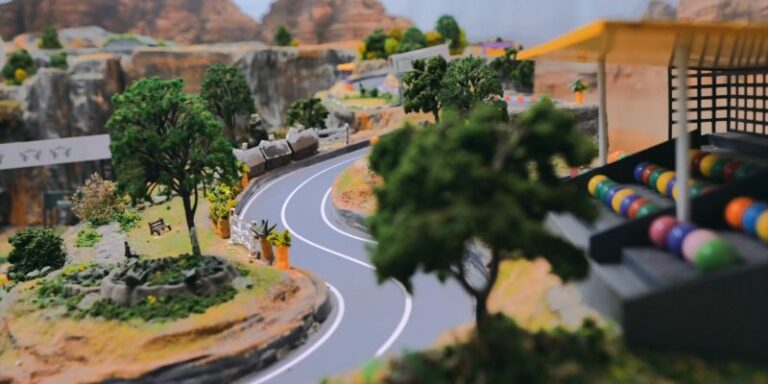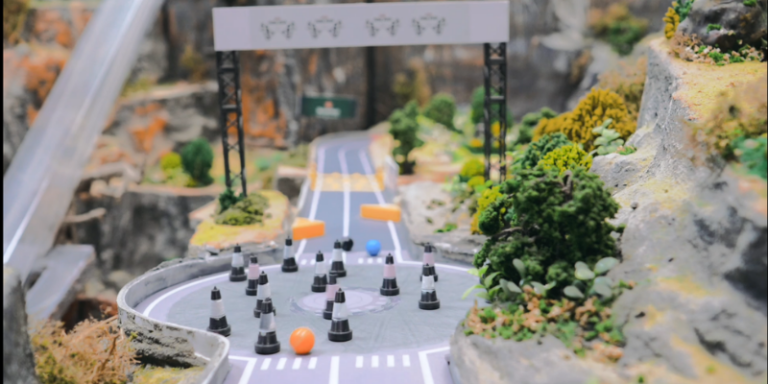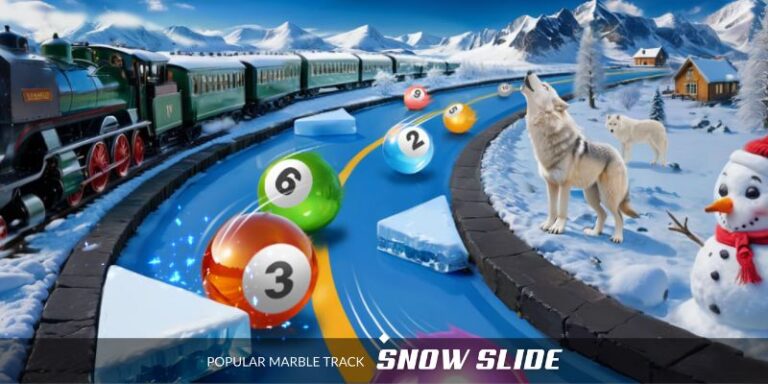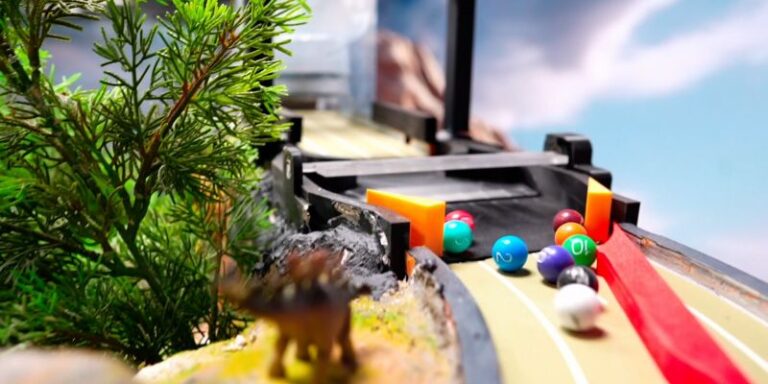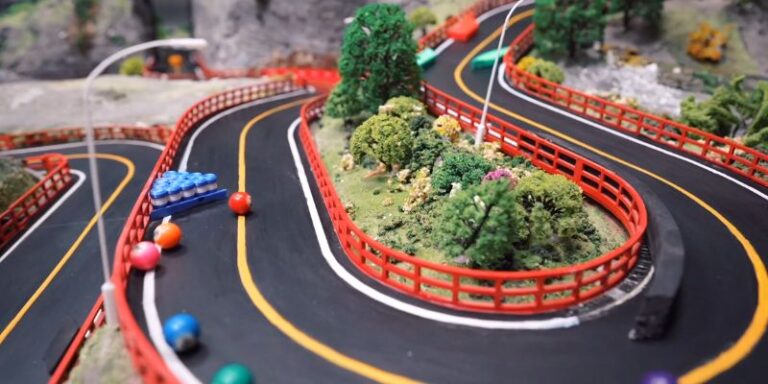Marble run engineering: Designing and learning!
Marble run engineering is more than just building a track for marbles to roll down; it’s a captivating blend of creativity, problem-solving, and scientific exploration. It’s about understanding how gravity, momentum, and other forces interact to create a thrilling and dynamic experience for the marbles and the builders.
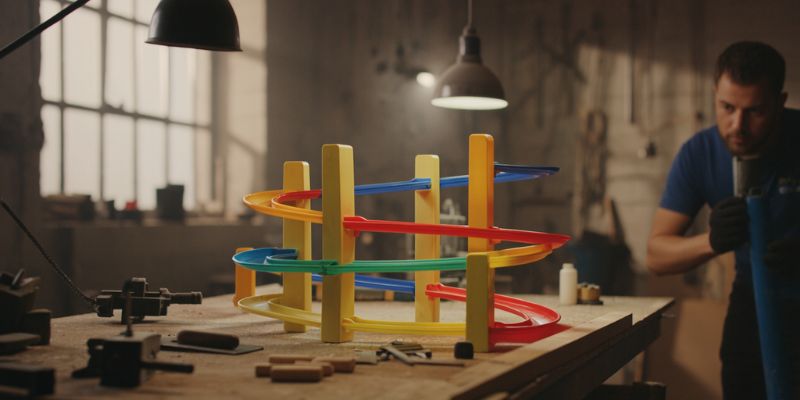
Discover the captivating universe of marble run engineering in this article. Delve deeply into the fundamental concepts behind the operation of marble runs, explore a wide range of clever mechanisms, and receive advice on crafting and constructing your own gravity-driven works of art. Prepare to unleash your inner engineer and delve into the enthralling realm of marble run mechanics!
What is marble run engineering
Marble-run engineering is a captivating fusion of creativity and science. Builders turn everyday materials into gravity-powered masterpieces. It combines imagination, problem-solving, and an understanding of physics principles as marbles race, twist, and tumble through intricate tracks.
Beyond Building: Understanding the Science
Marble run engineering involves more than just stacking blocks and tubes; it requires a deep understanding of the forces that make the marbles move.
Gravity: Gravity pulls objects downward and is the engine that powers the marble run. Engineers must carefully consider the angle and length of ramps to ensure marbles gain enough speed to complete the course.
Friction: Friction, the resistance between surfaces, can be both beneficial and problematic in marble run engineering. Too little friction and the marbles might fly off the track; too much friction and they slow to a crawl. Choosing the right materials and ensuring smooth transitions between track sections are crucial for managing friction.
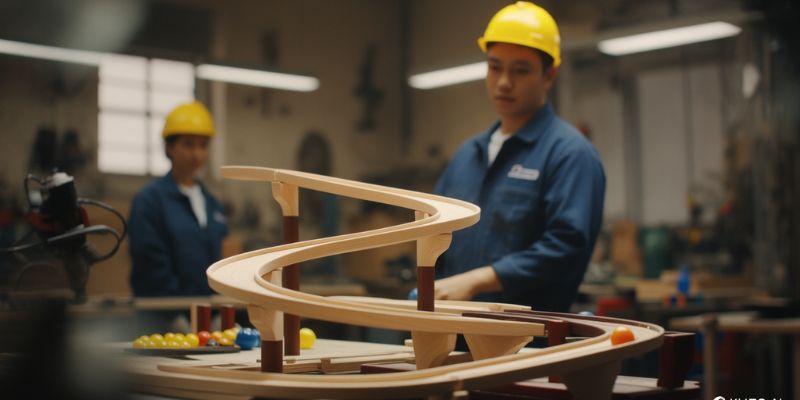
Momentum: Momentum, the product of a marble’s mass and velocity, determines how far it can travel and how well it can overcome obstacles. A heavier marble moving at the same speed as a lighter one will have more momentum.
Potential and Kinetic Energy: Due to its position, a marble at the top of a ramp possesses potential energy. As it descends, this potential energy is converted into kinetic energy, the energy of motion. Understanding this energy transfer helps engineers design tracks that maximize speed and excitement.
Engineering the Fun: Mechanisms and Contraptions
Marble run engineering is about more than just basic marble run track layout; it involves incorporating various mechanisms that add complexity and excitement to the design. These mechanisms can include:
- Ramps: The basic building block of any marble run, ramps propel the marbles downward and can be designed with varying angles and curves.
- Chutes: Enclosed pathways that guide marbles in a specific direction.
- Funnels: Cone-shaped structures that create bottlenecks and force marbles to compete for position.
- Loops: Circular sections that send marbles upside down, testing their momentum and grip.
- Jumps: Gaps in the track that require marbles to leap across, demonstrating projectile motion.
- Spinners: Rotating discs that alter the marbles’ direction, adding an element of randomness.
- Elevators: Mechanical devices that lift marbles back to the top of the track for continuous play.
- Switches: Mechanisms that allow marbles to choose between different paths, adding interactivity.
- Chain Reactions: Elaborate sequences of events a single marble triggers, showcasing cause and effect.
The Engineering Design Process
Marble run engineering is a creative and iterative process involving several key steps:
- Brainstorming: Generating ideas for track layouts, obstacles, and mechanisms.
- Planning: Sketching the design, considering materials, and estimating dimensions.
- Building: Constructing the track using various tools and techniques.
- Testing: Rolling marbles through the track to identify and fix any issues.
- Refining: Improving the design based on test results and feedback.
Marble run engineering is a rewarding hobby that combines creativity, problem-solving, and scientific exploration. By understanding basic principles and experimenting with different mechanisms, you can build marble runs that are fun to watch and showcase the wonders of engineering in action.
Basic engineering concepts for marble runs
Marble run engineering might sound intimidating, but it’s really just a fancy way of saying “understanding how marble runs work.” And the good news is, the basic concepts are easy to grasp! Once you have a handle on these principles, you’ll be able to build more exciting and efficient tracks, and even start experimenting with your own creative designs.
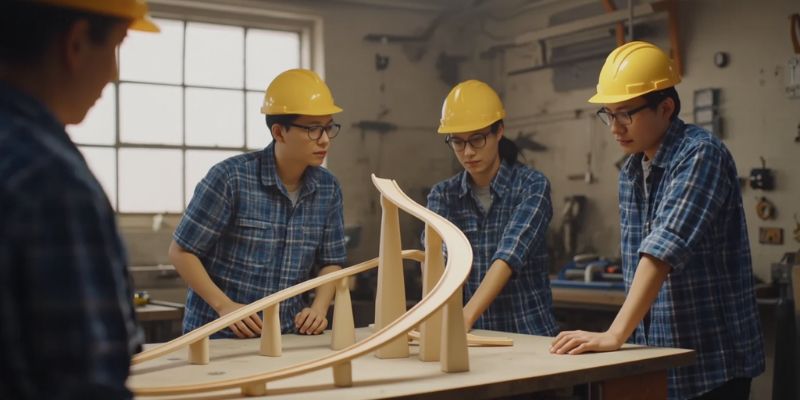
Gravity: Your Marble’s Best Friend (and Worst Enemy)
Gravity is the force that pulls everything towards the center of the Earth, including marbles. In a marble run, gravity makes the marbles roll down the track. However, gravity can also be challenging, especially when designing loops or jumps where the marbles need to defy its pull. To harness gravity, start your track at a higher elevation and let the marbles gain speed as they descend.
Friction: The Push and Pull of Surfaces
Friction is the force that resists motion between two surfaces in contact. In a marble run, friction can slow the marbles as they roll. The amount of friction depends on the materials of the track and the marble. Smooth surfaces like plastic or polished wood create less friction, allowing marbles to roll faster, while rough surfaces like sandpaper or carpet generate more friction, slowing the marbles down. Experiment with different materials to see how they affect the marbles’ speed, and consider combining materials to create sections where the marbles speed up or slow down.
Momentum: The Rolling Powerhouse
Momentum measures how difficult it is to stop a moving object. In a marble run, its momentum depends on its mass (how heavy it is) and velocity (how fast it moves). Heavier and faster marbles have more momentum. You can use momentum to your advantage by building ramps that give the marbles a good initial push, helping them overcome obstacles like jumps or loops.
Potential and Kinetic Energy: The Energy Dance
Potential energy is the stored energy a marble has when it’s at the top of a ramp due to its position. As the marble rolls down, this potential energy is converted into kinetic energy, the energy of motion. According to the energy conservation law, the total amount of energy in the system (potential + kinetic) remains constant, but the form of energy changes as the marble moves. Design tracks where marbles gain enough kinetic energy to overcome obstacles and reach the finish line.
Center of Gravity: Finding Balance
The center of gravity is the point where an object’s weight is evenly distributed. In a marble run, the marble’s center of gravity is at its center. A low center of gravity makes an object more stable, while a high center of gravity makes it less stable. Keep the center of gravity low by using wider tracks and avoiding tall, unstable structures. This will help prevent the marbles from falling off the track.
Understanding these basic engineering concepts will help you design and build marble runs that are not only fun but also functional and efficient. As you experiment and learn, you’ll be able to create more complex and challenging tracks that will keep you entertained for hours on end.
Marble Run Mechanisms
Marble run mechanisms are the heart and soul of a captivating marble run, transforming straightforward gravity-powered descents into dynamic, multifaceted journeys. These mechanisms add complexity, variety, and a touch of magic to how marbles navigate the track, elevating your creation’s fun and educational value. Let’s explore some of the most popular and ingenious marble run mechanisms:
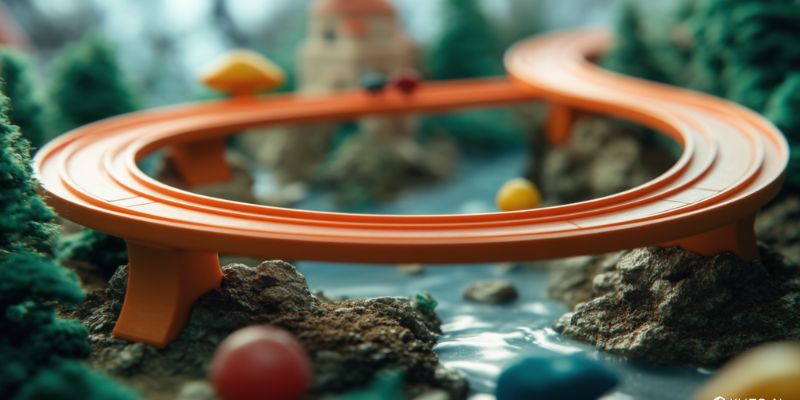
Basic Mechanisms: Setting the Stage for Marble Mayhem
Ramps and Slopes form the foundation of any marble run, using gravity to accelerate marbles down a slope. By varying the angle and length of the ramp, you can control the marble’s speed and create thrilling descents.
Experimenting with different heights and curves adds variety to your track. Funnels gather marbles into a narrow path, creating bottlenecks and moments of suspense, while chutes guide the marbles along a specific trajectory at high speeds. Curves add dynamic twists and turns, and switches allow marbles to choose between multiple paths, introducing an element of surprise and decision-making.
Intermediate Mechanisms: Unleashing the Fun Factor
Lifts and Elevators eliminate the need to manually lift marbles to the top, using gears, pulleys, or other simple machines to transport marbles back up, ensuring continuous play and endless fun.
Dominoes and Chain Reactions create elaborate sequences by incorporating various triggers, like a marble hitting a lever. Plinko Boards, inspired by the popular game show, feature a series of pegs that marbles bounce off as they descend, creating an unpredictable and mesmerizing path. Spinners, rotating discs that randomly change a marble’s direction, add an element of chance and excitement to the race.
Advanced Mechanisms: Engineering Marvels
Marble Pumps use techniques like Archimedes’ screws or conveyor belts to lift marbles upwards against gravity, adding a new dimension of complexity and showcasing your engineering skills. Mechanical Gates control the flow of marbles by opening and closing at specific intervals, creating timed challenges.
Incorporate musical instruments like xylophones or chimes into your marble run to elevate it to a sensory symphony. Automated features powered by motors and sensors can create self-starting tracks, marble sorting mechanisms, and interactive displays that respond to the marbles’ movement.
These examples illustrate the incredible mechanisms you can incorporate into your marble run designs. The possibilities are endless, so don’t hesitate to experiment and create your unique inventions!
Prepare yourself to become an engineer.
By fostering an interest in marble run engineering in children, and even in yourself, you’re cultivating essential skills that can lead to exciting STEM careers. Here’s how to embark on your journey as a marble run engineer

Embrace Curiosity and Experimentation
The essence of engineering is curiosity and a willingness to experiment. Encourage your child to ask questions, explore different ideas, and try new things. Let them play with various materials, test different track designs, and discover physics principles through hands-on activities.
Cultivate a Growth Mindset
Engineering is about learning from mistakes and refining designs. Help your child see failure not as a setback but as a chance to learn and improve. Encourage them to embrace challenges, persevere through difficulties, and celebrate every success, no matter how small.
Start with the Basics
Begin with simple marble run designs and gradually introduce more complex mechanisms as your child’s skills grow. Start with basic ramps, curves, and funnels, then move on to loops, jumps, and interactive elements. This gradual approach helps build confidence and a strong foundation in engineering principles.
Learn from the Masters
Study the designs of renowned marble run creators like Jelle Bakker of Jelle’s Marble Runs and other talented builders. Analyze their tracks, learn from their techniques, and get inspired by their creativity. Watch videos, read tutorials, and engage with the online marble run community to find new ideas and approaches.
Explore STEM Resources
Many educational resources are available to help you and your child learn about marble run engineering:
- Books and Websites: Find books and websites that explain the science behind marble runs, offer building instructions, and provide creative inspiration.
- Science Kits and Toys: Educational toy companies offer marble run kits with instructions and educational materials, making them a great introduction to STEM concepts.
- Online Courses and Workshops: Look for online courses or workshops on marble run design and construction to learn from experts and connect with other enthusiasts.
Embrace Failure as a Learning Opportunity
Building a marble run involves trial and error. When things don’t go as planned, view it as a chance to learn. Encourage your child to analyze what went wrong and try again. This iterative process is central to engineering and teaches valuable problem-solving skills.
Foster a Love of Learning
Marble run engineering isn’t just about building skills; it’s about nurturing a love of learning and discovery. Encourage your child’s curiosity, ask open-ended questions, and celebrate their successes. Creating a positive and supportive learning environment can inspire them to pursue their passion for STEM and reach their full potential as future engineers and innovators.
Visit Marble Magic to explore everything from thrilling races to creative track designs and engineering tips
